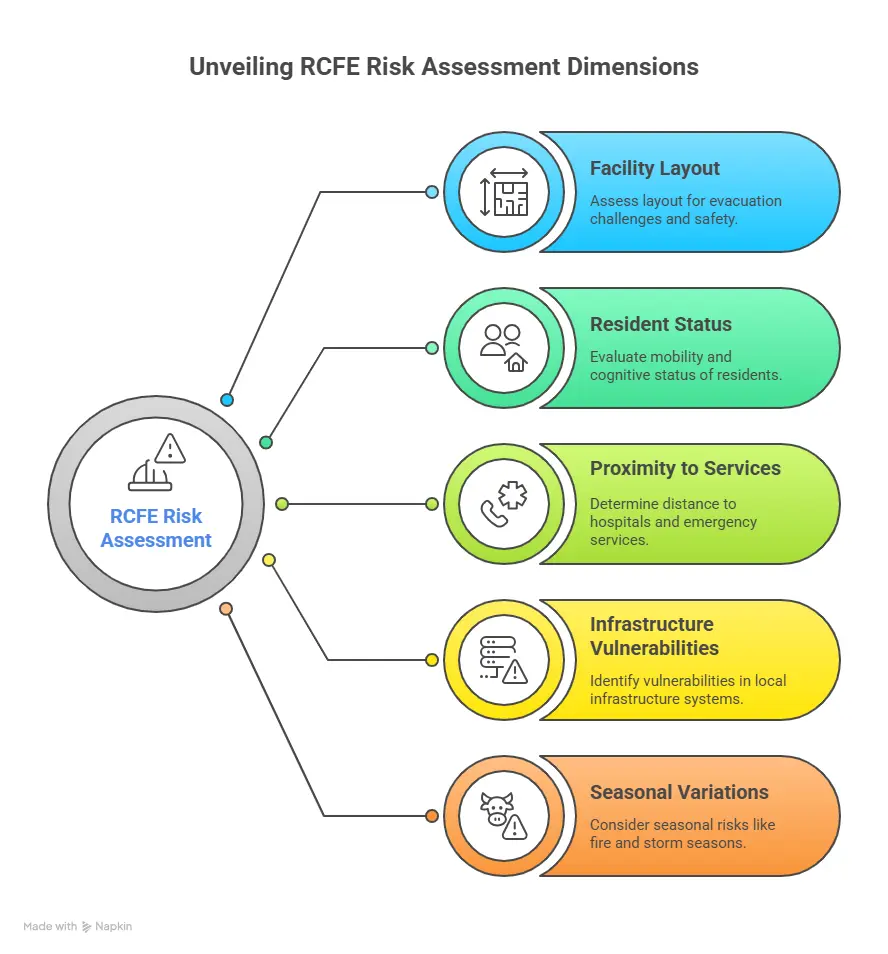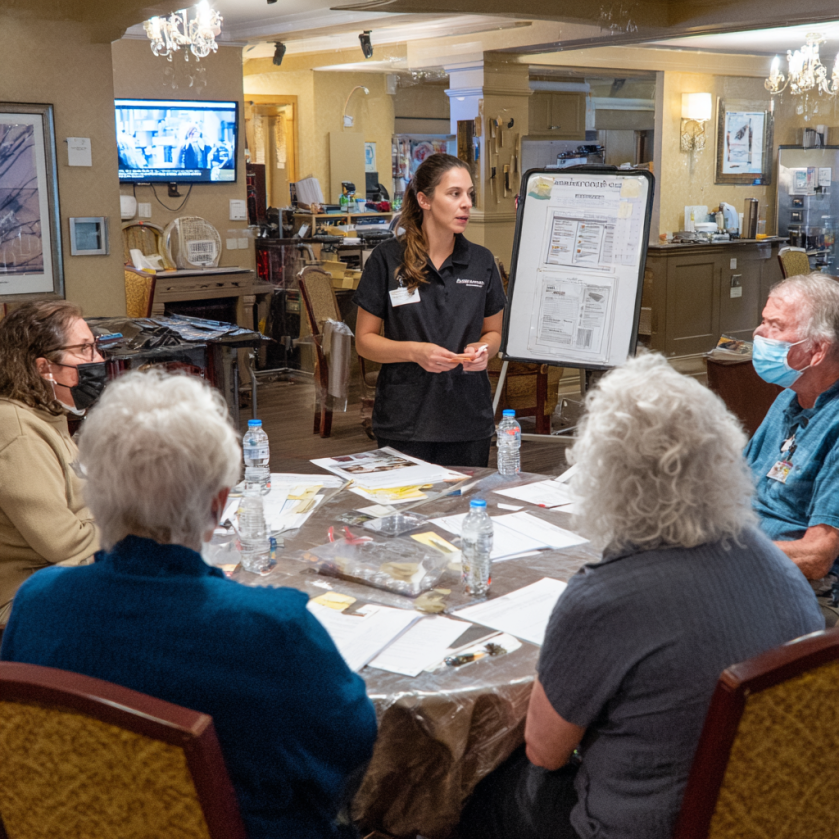In California, there are currently 7,500 licensed Residential Care Facilities for the Elderly (RCFE) with occupancy levels at approximately 174,000 beds.
RCFEs are also known as an assisted living facility, board and care home or retirement home. These are all RCFE’s and they all have the same regulations. According to a recent report by the California Advocates for Nursing Home Reform, there is a growing demand for increased assisted living facilities and capacity.
In this demanding environment, many RCFE administrators are looking to convert their homes into an assisted living facility. Indeed, operating an RCFE out of your home can be a fruitful and rewarding endeavor, but it’s important to understand what you are getting into.
Let’s explore some of the considerations of opening an RCFE in your home and provide some information that can help you decide if opening an RCFE home is right for you.
Preliminary Considerations of Opening a Home RCFE
Operating an assisted living facility is a meaningful privilege, but also a heavy responsibility and a state-regulated endeavor. Before you begin this journey here are some suggestions to consider as you begin the initial process of licensing your home as an RCFE.
- Make sure you are committed to the project and the thought of losing the privacy of your home life.
- Create a mission statement which is a set of goals you hope to achieve by opening your home as a senior facility.
- Research state laws and local zoning regulations about assisted living facilities and determine if your home is compatible.
- Take all the state-mandated RCFE classes to assure you have the proper training and information to begin the licensing process.
Like any other business, you will want to create a solid business plan. This plan will help guide you so that you will always know “what’s next.”
Evaluate the Local Need for a New Assisted Living Facility
Like most other businesses, you will want to begin by determining the need in your area for the services you are offering. Your future residents are the cornerstone of a successful RCFE, so give them top priority as you put a plan in place.
Even with a building that meets requirements, proper licensing, administrator certification and compassionate staff, you cannot run a successful facility without an adequate number of residents. You also need to consider the number of bedrooms, bathrooms and available living space in your home.
Keeping your rooms occupied and your residents happy is vital to the success of your RCFE.
So how can you determine the need for assisted living in your area?
Consider these resources:
Visit the California Department of Social Services (CDSS) website and select the “Find licensed facilities” box. You can search by city or zip code to locate facilities in your area.
- Contact local government agencies and organizations that serve senior citizens.
- Research and visit assisted living facilities in the area.
- Talk with patient advocates at local clinics and hospitals.
- Reach out to regional assisted living training institutions, including community or technical colleges.
RCFE License Application California
Once you have done your homework, verifying that there is an adequate need in your community, then turn your attention to obtaining proper credentials.
In California, CDSS requires that you have an RCFE license for your home before you admit any residents for care. You also personally need RCFE certification to prove you completed training and have the knowledge to safeguard the residents. As the owner of a home turned into an assisted living facility, you will need both.
It is important to keep in mind that RCFE licensing and RCFE administrator certification training takes time, patience and resources to complete.
The process begins by taking the required orientation course on the CDSS website.
Additionally, you will also have to fill out an application and sign up for an accredited RCFE administrator training course. You will also have to meet state educational and experience requirements when applicable.
The required qualifications are generally reasonable and you should be able to obtain any that you might be missing, but this can add some time to the certification and licensing processes.
One important requirement to plan for is the CDSS requirement that you show proof of three months of operating expenses in designated savings accounts before approving your license.
Once you have completed your certification and submitted your RCFE licensing application, CDSS will begin processing the application in Sacramento.
Once your paperwork has been reviewed and any missing paperwork submitted, your application packet will be sent to the local CDSS office that will oversee your facility.
A Licensing Program Analyst (LPA) will be assigned to your facility. The LPA will contact you and set up the Component II interview. Once this interview has been conducted, the LPA will order a fire inspection and verify operating funds in your account.
Finally, after you have received approval from the local fire marshal, LPA will send a checklist and schedule an on-site visit to inspect and approve your home.
Waiting to Process Your Assisted Living License – Use the Time Wisely
Sometimes it can seem like there is a lot of downtime in this process, but there are actually a lot of ways you can utilize that to your advantage.
While you are waiting for the DSS to review your license application, we suggest you also work on marketing your assisted living facility to prospective residents as well as finding caring, competent and reliable employees to help run your facility.
Although you may adjust your opening date along the way, you will want to have employees trained and your home ready for admissions when you do open your doors. You should also consider creating a list of senior social activities to keep your guests engaged once they make your home their home.
Seek Professional Assistance
As our population continues to age there will certainly be an increase in the need for high-quality RCFE’s.
If you feel like this could be a good fit for you, then the first step is to do your homework and create a plan.
If this process seems overwhelming, you would be correct.
CDSS has guidelines they follow during the application process and if you do not reply or submit missing documents in time, you could be at risk for CDSS to deny your application. This would mean you are not allowed to resubmit an application for one year.
Yikes!
To prevent this scenario from happening, you would be wise to seek the assistance of someone who has experience in licensing and working with CDSS.
To ensure that you do everything correctly the first time and save precious time during the licensing process, Assisted Living Education can help. Our experience and positive relationship with CDSS can save you time and money while you complete the process to get your building licensed. We have helped hundreds of individuals successfully obtain an RCFE license for their buildings and helped them on the path to having a viable and safe assisted living facility.
If this is something you are interested in, don’t hesitate to reach out to us. We are here to help.
10 Frequently Asked Questions About Converting Your Home into an Assisted Living Facility in California
1. Can I legally convert my home into an RCFE in California?
Yes, you can convert your home into a Residential Care Facility for the Elderly (RCFE) in California, provided your property meets specific zoning regulations, building codes, and licensing requirements. Before beginning the process, you must research local zoning laws to ensure your residential area allows for assisted living operations. The California Department of Social Services (CDSS) regulates all RCFEs, and you’ll need to obtain proper licensing before admitting any residents. Your home must pass fire safety inspections, meet accessibility standards, and provide adequate space for the number of residents you plan to serve.
2. How long does it take to get an RCFE license for my home?
The RCFE licensing process typically takes 6 to 12 months from start to finish, though timelines can vary based on several factors. The process begins with completing the mandatory CDSS orientation course and RCFE administrator certification training. After submitting your application, CDSS reviews it in Sacramento before forwarding it to your local CDSS office. A Licensing Program Analyst (LPA) will then be assigned to conduct a Component II interview, order fire inspections, verify your operating funds, and perform an on-site home inspection. Delays can occur if documentation is incomplete or if modifications are needed to meet safety requirements, so working with experienced licensing consultants can help streamline the timeline.
3. What are the financial requirements to convert my home into an RCFE?
California requires proof of three months of operating expenses in designated savings accounts before approving your RCFE license. Operating expenses typically include staff salaries, utilities, food costs, insurance, supplies, and emergency reserves. For a small home-based RCFE with 6 residents, this could range from $30,000 to $75,000 depending on your staffing model and location. Beyond the operating reserve, you’ll need capital for initial licensing fees (approximately $1,000-$3,000), administrator certification training costs, facility modifications to meet code requirements, liability insurance, and initial marketing expenses. Many aspiring RCFE owners underestimate startup costs, so creating a detailed business plan with realistic financial projections is essential.
4. Do I need to make structural changes to my home?
Most homes require at least some modifications to meet RCFE standards, though the extent varies based on your home’s current condition and the number of residents you plan to serve. Common modifications include installing fire sprinkler systems or additional smoke detectors, widening doorways for wheelchair accessibility (minimum 32 inches clear), adding grab bars in bathrooms, ensuring adequate emergency exits, improving lighting in hallways and stairways, and potentially converting spaces to add bathrooms (typically one bathroom per four residents). Your home must also meet ADA accessibility requirements and have adequate common areas for dining and activities. The Licensing Program Analyst will provide a detailed checklist during the inspection process, and working with a contractor experienced in RCFE conversions can help ensure compliance.
5. How many residents can I have in my home-based RCFE?
The number of residents allowed in your home-based RCFE depends on your available space, layout, and local regulations. California RCFEs are categorized by size: small facilities serve 6 or fewer residents, while larger facilities can accommodate more. Most home conversions fall into the small facility category due to space limitations. Each resident must have adequate bedroom space (typically 80-100 square feet for single occupancy), access to bathroom facilities, and shared access to common areas. You’ll also need to consider staff-to-resident ratios, which impact your ability to provide quality care. Starting smaller allows you to build experience and reputation before potentially expanding, and it often requires less extensive modifications to your home.
6. What certifications and training do I need as the owner-administrator?
As the owner-administrator of a home-based RCFE, you must complete the RCFE Administrator Certification Training, which covers essential topics including resident rights, medication management, emergency procedures, nutrition, and California RCFE regulations. This training typically consists of 80 hours of coursework through an accredited program. Additionally, you must complete the CDSS orientation course and may need to meet educational and experience requirements depending on your background. First aid and CPR certifications are also required. If you don’t meet certain educational requirements, you may need to complete additional coursework or demonstrate relevant work experience in healthcare or social services. Continuing education is required annually to maintain your certification and stay current with regulatory changes.
7. Will I lose the privacy of my home by operating an RCFE?
Operating an RCFE from your home significantly impacts your personal privacy and lifestyle, which is why this is a critical consideration before beginning the conversion process. Your home becomes a licensed care facility subject to state inspections, resident and family visits, and staff presence. You’ll need to dedicate specific areas exclusively for resident use, including bedrooms, bathrooms, dining areas, and common spaces. Depending on your home’s layout, you may be able to maintain a separate living area for your family, but your daily life will be intertwined with facility operations. Many owner-administrators find the experience rewarding and enjoy being closely involved in resident care, but others struggle with the loss of personal space and privacy. Honestly assessing your comfort level with this lifestyle change before committing to the conversion is essential for long-term success.
8. How do I determine if there’s enough demand in my area?
Researching local demand is crucial before investing time and money in the conversion process. Start by visiting the CDSS website’s “Find Licensed Facilities” tool to search for existing RCFEs in your area by city or zip code. A high concentration of facilities might indicate strong demand, but it also means more competition. Contact local government aging services departments, senior centers, and organizations serving elderly populations to discuss community needs. Visit competing facilities to understand their occupancy rates, services offered, and pricing. Talk with discharge planners at local hospitals and patient advocates at clinics, as they often refer patients to assisted living. Consider demographic trends in your area—communities with growing senior populations and limited existing RCFE capacity present the best opportunities. Understanding your specific niche (such as dementia care or affordability) can help you succeed even in competitive markets.
9. What happens if my RCFE license application is denied?
If CDSS denies your RCFE license application, you cannot reapply for one full year, making it critical to get everything right the first time. Common reasons for denial include incomplete documentation, failure to meet financial requirements, facility deficiencies that aren’t corrected within the required timeframe, criminal background check issues, or not responding to CDSS requests within specified deadlines. To avoid denial, maintain thorough documentation throughout the process, respond promptly to all CDSS communications, work with experienced consultants who understand CDSS requirements and procedures, and address any facility deficiencies immediately when identified. If you receive a notice of deficiencies, take it seriously and correct all issues promptly. Many denials result from applicants not understanding the complexity of the process or failing to meet deadlines rather than disqualifying factors, which is why professional guidance from organizations like Assisted Living Education can significantly improve your success rate.
10. Should I hire professional help for the licensing process?
While it’s technically possible to navigate the RCFE licensing process independently, working with experienced professionals can save significant time, money, and stress. The licensing process is complex, with specific documentation requirements, strict deadlines, and detailed facility standards that can be challenging to navigate without experience. Professional consultants who specialize in RCFE licensing understand CDSS procedures, can help you avoid common pitfalls, accelerate the timeline by ensuring all documentation is correct the first time, provide guidance on facility modifications and compliance, and leverage their positive relationships with CDSS to facilitate smoother processing. Organizations like Assisted Living Education have successfully helped hundreds of individuals obtain RCFE licenses and can provide comprehensive support throughout the process. The cost of professional assistance is often offset by avoiding application denials (which result in a one-year waiting period), reducing costly modification mistakes, and opening your facility months earlier than you might independently. For most people, especially those without healthcare licensing experience, professional guidance is a worthwhile investment in ensuring success.























